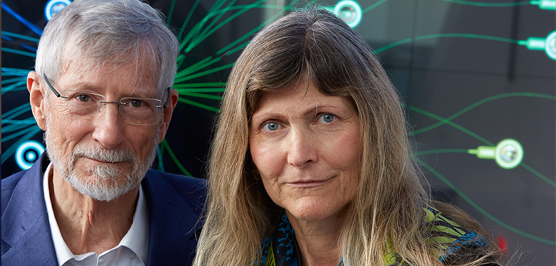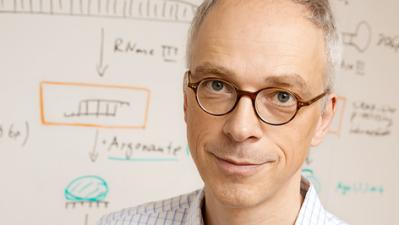Ingeborg Hochmair, Erwin Hochmair
Cochlear implant to restore hearing
Finalists for the European Inventor Award 2014
Understanding speech requires more than just hearing it – the listener also receives information via the speaker’s inflection or tone of voice. Ingeborg and Erwin Hochmair’s invention, the multi-channel cochlear implant, allows people around the world to clearly understand speech rather than only muffled sound.
The married couple's invention consists of two components: an external processor that converts sound into electrical signals, and an internal implant that sends that information to the brain. The implant itself comprises a computer that receives information from the processor, and uniquely shaped electrodes that pass this information along.
In contrast to single-channel cochlear devices, through which patients could only discern some vague sounds, the Hochmairs' multi-channel implant has been enabling the profoundly deaf or severely hearing-impaired people to regain their complete sense of hearing since 1980. It is still the only device ever to have successfully replaced a sensory organ.
Societal benefit
Hearing loss is one of the six leading contributors to the global disease burden, according to the World Health Organisation (WHO). The multi-channel implant transmits all sorts of sound information accurately and allows hundreds of thousands of people with hearing impairment to understand speech without the need for lip reading or visual stimuli such as hand gestures.
Economic benefit
MED-EL, based in Innsbruck, Austria, is the second-largest producer of cochlear implants in the world. As of December 2010, 219 000 people had received cochlear implants from MED-EL, underlining its important role in a growing market.
Cochlear implants are the largest segment in the overall hearing implants market, generating more than 80% of the market's global revenue in 2010. The global cochlear implants market is forecast to reach EUR 1.7 billion by 2017, with a annual growth rate of 14%. The market is expected to be driven by the growing incidence of hearing loss, the rapidly growing potential patient base in emerging markets such as China and India, and technological advancements in the area of cochlear implants.
How it works
In cochlear implants, a microphone absorbs sound and sends it to an external minicomputer for processing. There, it is converted into digital information that can be sent to the surgically implanted part of the system. The implant creates electrical signals out of the sound information and passes them along the cochlea, the part of the inner ear that processes sound.
The Hochmairs' multi-channel implant uses an array of electrodes to stimulate the auditory nerve in as many as eight different places. Also, these electrodes developed by the couple are much longer than those found in other implants and thus able to be inserted into the innermost regions of the ear. Due to their spiral form, these wires fit softly inside the cochlea without disturbing any nerves.
The inventors
Ingeborg and Erwin Hochmair met at the Vienna University of Technology in 1975 and began developing the world’s first micro-electronic multi-channel cochlear implant together. Only two years later, their first device could be implanted in a patient and in 1980 their invention was completed.In 1990, the couple co-founded the company MED-EL, which Ingeborg still manages as CEO, while Erwin has been a professor for applied physics and micro-engineering at the University of Innsbruck since 1985. The Hochmairs are the first married couple to be nominated to a joint European Inventor Award.
Did you know?
Depending on the region of the world, as many as three in a thousand children are born with hearing impairments. In most cases, the auditory nerve is intact but the hair cells, which translate vibrations produced by sound into electrical signals, are either missing or damaged. The Hochmair’s cochlear implant allows sound information to be sent directly to the brain, bypassing the damaged cochlea.
Media gallery
Patent numbers:
Contact
European Inventor Award and Young Inventors Prize queries:
european-inventor@epo.org Subscribe to the European Inventor Award newsletterMedia-related queries:
Contact our Press team#InventorAward #YoungInventors











